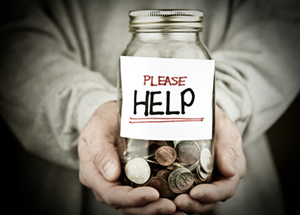3 Ways to Spot a Fraudulent Charity
/ SPECIAL TO THE WEB
SPECIAL TO THE WEB
Jacob Parks, J.D., CFE
ACFE Research Specialist
The sudden and vivid destruction caused by tornadoes, tsunamis, man-made catastrophes and other crises compels us to contribute to the people affected. There is a particular urgency in responding to disasters because the victims often lack the supplies or help they need to survive. As a result, donors often choose to contribute as soon as possible to a charitable organization that pledges to help the disaster victims.
 But fraudsters swarm to take advantage of highly publicized emergencies, and many bogus charities that pop up under the guise of helping victims are just pocketing the donations. Worse, some organizations described as charities actually function solely to fund organized criminal groups.
But fraudsters swarm to take advantage of highly publicized emergencies, and many bogus charities that pop up under the guise of helping victims are just pocketing the donations. Worse, some organizations described as charities actually function solely to fund organized criminal groups.
Fraud involving disaster relief might be among the most immoral of financial crimes, but it happens so often that we should not be surprised or unprepared. There are many actions that individuals and organizations can take to help give them confidence their donations will not be misused.
DO THE HOMEWORK
The nature of disasters does not leave as much time for performing due diligence checks as most situations — the victims need relief right away. Even so, donors can do some research on an organization in a short amount of time using the following methods:
- Search a charity evaluation site for the organization, such as Charity Navigator or GiveWell. These sites use several factors, such as transparency and how funds are used, to rate charities. Additionally, you can find the charity’s authorized contact information to compare to what solicitors have sent you.
- Check to see if the organization is tax exempt or has had its exempt status revoked using this IRS site (or check with the applicable tax authority).
- Simply running an online search for “scam” and the name of the charity might bring up revealing results. Charity scams typically involve mass solicitations, and whistleblowers often identify potential scams online.
- If responding to a solicitation, call the charity using its official contact information to ensure that it is the true solicitor.
- Check to see if the charity is registered with a state government agency (most states require registration with the State Attorney General’s office or similar agency).
BEWARE OF CHARITIES WITH LITTLE TO NO HISTORY
Suppose you come across a charity and find no negative history, or not much history at all for that matter. Even if a new charity is legitimate, it's questionable that it has the infrastructure to effectively move the donations to the area or people in need. Every charity has to start somewhere, but disaster relief organizations are especially vulnerable to fraud and mismanagement. Finding another organization with a strong history that will suitably pursue the cause is a safer option. If no alternative exists, ask the charity’s representatives for details on their logistics for providing aid to the victims of a disaster.
HAVE AN EFFICIENT IDENTIFICATION PROCESS
Disaster relief organizations often operate at or near the disaster sites, where there is a system of procuring and distributing resources. Unfortunately, con artists are pervasive near disaster sites because there is a trust that everyone else is there to help. After Hurricane Sandy tore through the New Jersey shore, for instance, con man David Scott Ruddy convinced shelter volunteers for several weeks that he was a FEMA representative. He was not, and by convincing people that his role was to help, he allegedly bilked victims out of at least $50,000 in relief funds.
Many organizations use photo ID cards or badges for workers authorized to handle supplies and other valuable assets. The recurring theme of on-site disaster-relief scams is a person claiming to have governmental authority without any actual association with the government. Don’t be afraid to question authority; most of these schemes can be avoided by verifying a person’s credentials.
Read the full article at Fraud-Magazine.com.